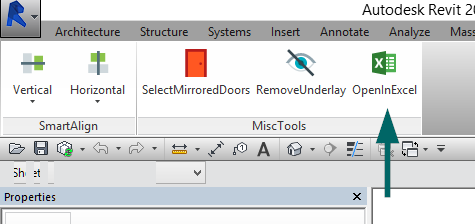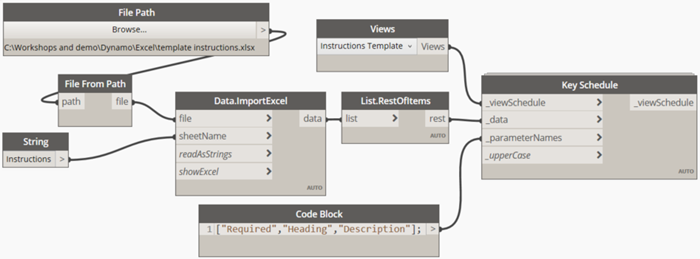Revit Plugins and Tools: Enhancing Your BIM Experience
Wiki Article
Mastering the Art of Information Integration: Just How to Seamlessly Import Excel Info Into Revit
In this post, we will certainly guide you through the process of understanding the art of information combination. Obtain all set to prepare your Excel information easily and follow our detailed guide to import documents into Revit. With our best methods, you'll accomplish data combination success in no time.Recognizing the Relevance of Information Combination in Revit
Recognizing the importance of data integration in Revit is vital for smooth importing of Excel data. When you incorporate data from Excel right into Revit, it enables you to efficiently update and handle information throughout the entire task. This integration makes certain that your style and building process is current and precise.By integrating information, you can conveniently import and update parameters, schedules, and even geometry in Revit. This removes the demand for manual information entrance, conserving you time and decreasing the risk of errors. With Revit's data combination capabilities, you can maintain consistency and precision in your job, while additionally boosting partnership amongst group members.

Exploring the Excel File Format for Revit Integration

In order to efficiently incorporate Excel data into Revit, it is essential to ensure that the data is formatted correctly. This consists of appropriately classifying columns and rows, as well as structuring the data in such a way that is suitable with Revit's information schema. Revit utilizes particular specifications and categories to arrange data, so it is crucial to line up the Excel information with these criteria to make sure a smooth integration.
Additionally, it is necessary to keep in mind that Revit only supports specific data types when importing from Excel. These consist of message, numbers, and dates. Any kind of other data kinds, such as formulas or conditional format, will certainly not be acknowledged by Revit and might trigger concerns during the assimilation process.
Preparing Your Excel Information for Seamless Import Into Revit
To guarantee a smooth assimilation process, you'll require to correctly style and label the columns and rows in your Excel data prior to importing it right into Revit. This step is crucial since it permits Revit to accurately analyze and organize your data. Beginning by examining your Excel information and recognizing which rows and columns have relevant info for your Revit task. Make certain to classify each column with a clear and descriptive header. This will certainly aid you and others easily understand the function of each column and stay clear of confusion during the import procedure.Following, guarantee that the data in each column is effectively formatted. As an example, if you have a column for measurements, see to it that all dimensions are consistently formatted in the very same systems of measurement. Revit counts on constant formatting to accurately interpret and import data.
Furthermore, it is necessary to look for any type of empty cells or disparities in your data. Revit may not have the ability to review or import information from cells that are empty or contain errors. Consequently, it is advised to assess your Excel information and tidy up any incongruities prior to importing it into Revit.
Step-By-Step Overview to Importing Excel Data Into Revit
When you've effectively formatted and identified your Excel data, you can easily import it right into Revit by following this step-by-step guide. To start, open Revit and navigate to the "Insert" tab. Click "Import CAD" and pick "Import Excel" from the dropdown menu. A brand-new home window will show up, asking you to locate the Excel file you intend to import. Search your computer and choose the Excel data, then click "Open."Next, a dialog box will show up, permitting you to tailor the import settings. Here, you can choose the worksheet you intend to import, specify the series of cells to import, and select the proper systems for your information. When you have actually made your choices, click "OK" to proceed.
Revit will currently show a sneak peek of your Excel data. Take a minute to guarantee and assess the preview that every little thing looks correct. If required, you can make adjustments to the import settings by clicking on the "Setups" button.
Ideal Practices for Data Combination Success in Revit
Ensure you adhere to these best methods to ensure effective combination of information in Revit. It is crucial to organize your information in Excel prior to importing it right into Revit. This implies ensuring constant calling conventions, correct formatting, and accurate data depiction. Next off, use Revit's built-in tools for information mapping. This will certainly allow you to match the columns in your Excel data with the matching criteria in Revit. Bear in mind the information and devices kinds when mapping the data, as any inconsistencies can bring about errors in the integration procedure.Another important technique is to consistently confirm and update your data. In addition, make use of data validation devices within Revit to determine any mistakes or incongruities in the incorporated information.
Finally, it is recommended to develop a clear process for data integration. This consists of defining obligations and functions, setting up a communication network between team members, and developing a regular tempo for data updates and testimonials. By following these finest practices, you can make sure a smooth and successful combination of information in Revit, ultimately enhancing the revit add ins performance and accuracy of your project.
Verdict
In final thought, mastering the art of information combination is vital for seamless import of Excel submits right into Revit. Understanding the importance of data combination in Revit is the very first step in the direction of effective integration.When importing data from Excel into Revit, it is crucial to comprehend the documents style and exactly how it can affect the integration process (revit add ins). Revit uses certain specifications and categories to arrange data, so it is crucial to straighten the Excel information with these specifications to ensure a smooth assimilation
Be conscious of the devices and data types when mapping the information, as any kind of inconsistencies can lead to mistakes in the combination process.
Furthermore, make usage of information validation devices within Revit to determine any type of errors or incongruities in the integrated information.

Report this wiki page